Written over 15 years ago, this was one of my first ACW posts.
Category Archives: Uncategorized
The IAEA Does Not Determine JCPOA Compliance
Contrary to this phrase from the AP, national governments determine JCPOA compliance, not the IAEA:
Since Iran is admittedly no longer complying with several elements of the nuclear deal, according to the International Atomic Energy Agency…
I don’t know what “admittedly” means in this context either.
Hayden on Syria Nuclear Reactor Intel
Former CIA Director Michael Hayden explained in this 2010 interview why the CIA chose to declassify intel concerning the Syrian reactor which Israel attacked in 2007:
You strongly advocated publicly disclosing the role intelligence played in detecting the nuclear reactor in Syria. Why did you advocate this?
It was a very complex political problem. First of all, when we became aware of it, it became very important to keep it secret. Arguably secret, because it had to be dealt with in a way that didn’t create a war in the Middle East. And the more public it became, the more difficult it would be for the Syrians to act responsibly. So no question that it needed to be kept secret.
But after a time, after the facility had been destroyed, there were two lines working—because you had two bad actors here, the Syrians and the North Koreans. With the Syrians, you needed to keep it secret, otherwise they might do something stupid if they were publicly embarrassed. With the North Koreans on the other hand, we were moving in the direction of a new arrangement with regard to things “nuclear,” including proliferation. And so, the fact that we knew the North Koreans had done this very egregious thing, I felt would undercut the confidence in the treaty when, sooner or later, it became more visible, more known, more public. So we had this line with the Syrians where you’ve got to keep it secret, but that was fading over time. Conversely, with the North Koreans, the imperative to make it public was growing over time, as we were getting to a firm agreement. I think the lines crossed about the first of the year—remember it was discovered largely in April [2007] and destroyed in September [2007]. By about December or January [2008], I think that’s when it’s crossed. So we at the Agency became very strong advocates for making it public. But in an intelligence process way, we knew that we had only told a few members of Congress, and the legitimacy for keeping it closely held was eroding as we got further away from the destruction of the facility, and therefore from any likely Syrian reaction. We had an additional impulse to tell Congress.
UK National Archives Free For a While
This post explains.I haven’t yet checked out the new material.
Skinny Puppy – VX Gas Attack
According to the caption, this is the backing video from the Too Dark Park tour:
And live from Montreal and Toronto 2004:
Here Comes the War
ACDA on PNEs, 1975
The entire 1975 ACDA report is worth reading, but I was struck by the amount of space devoted to peaceful nuclear explosions. See below.
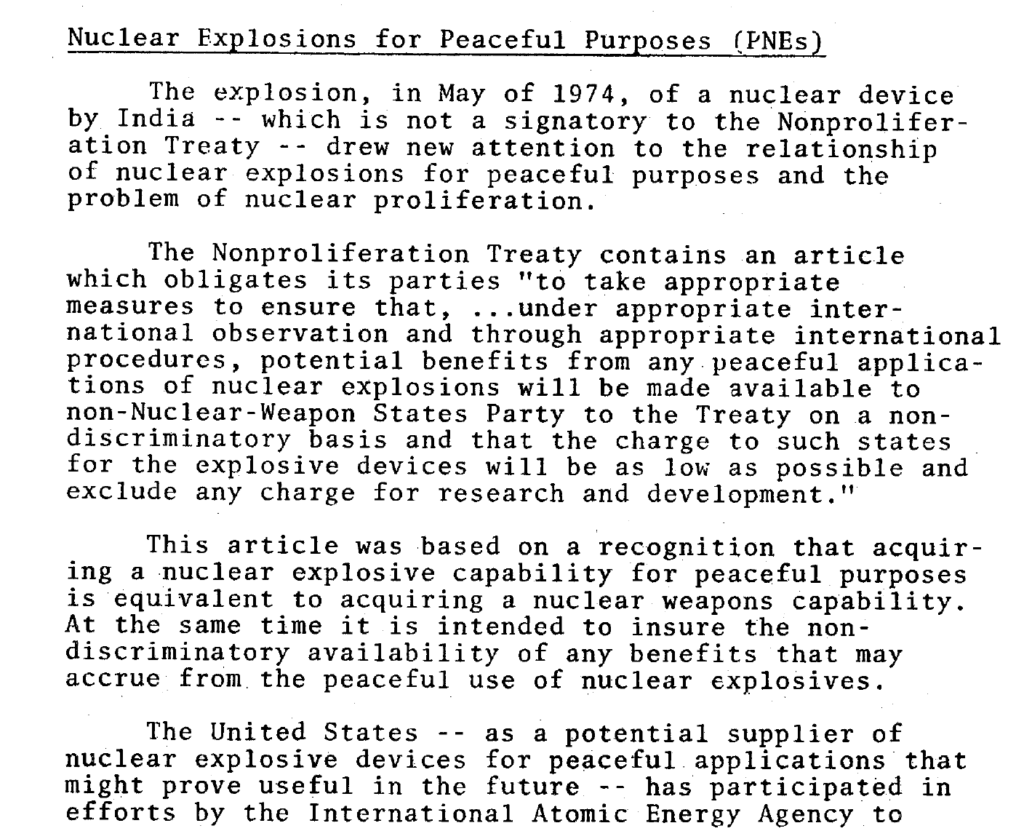
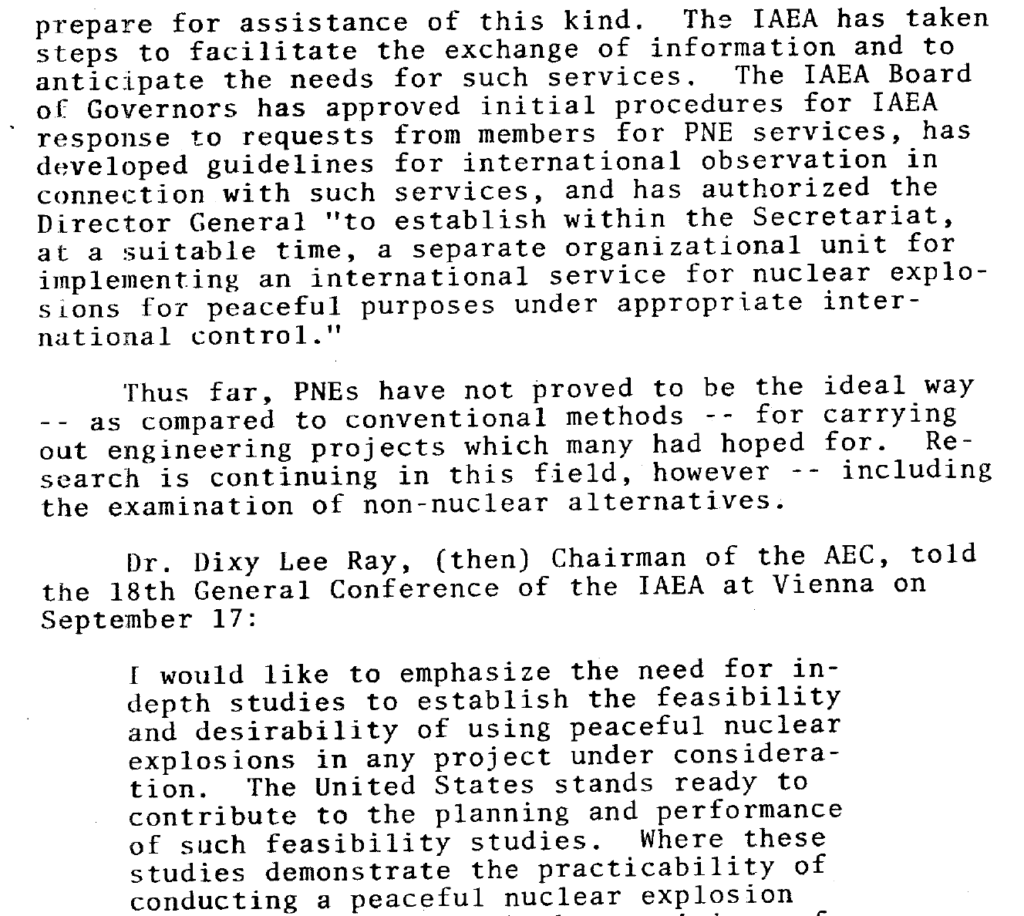
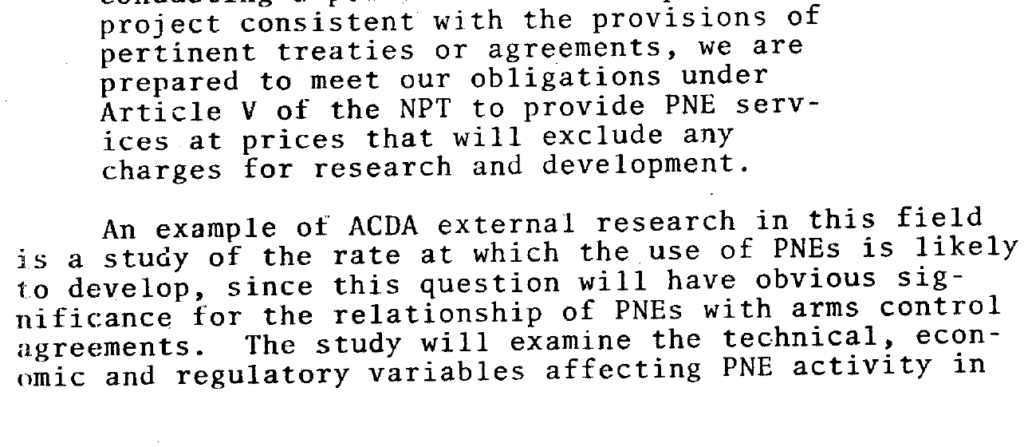
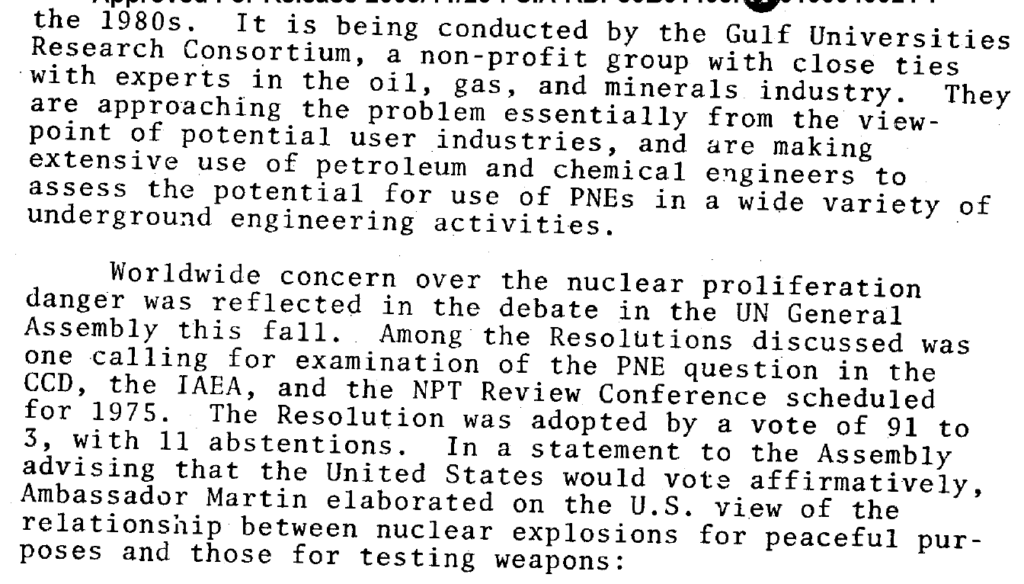
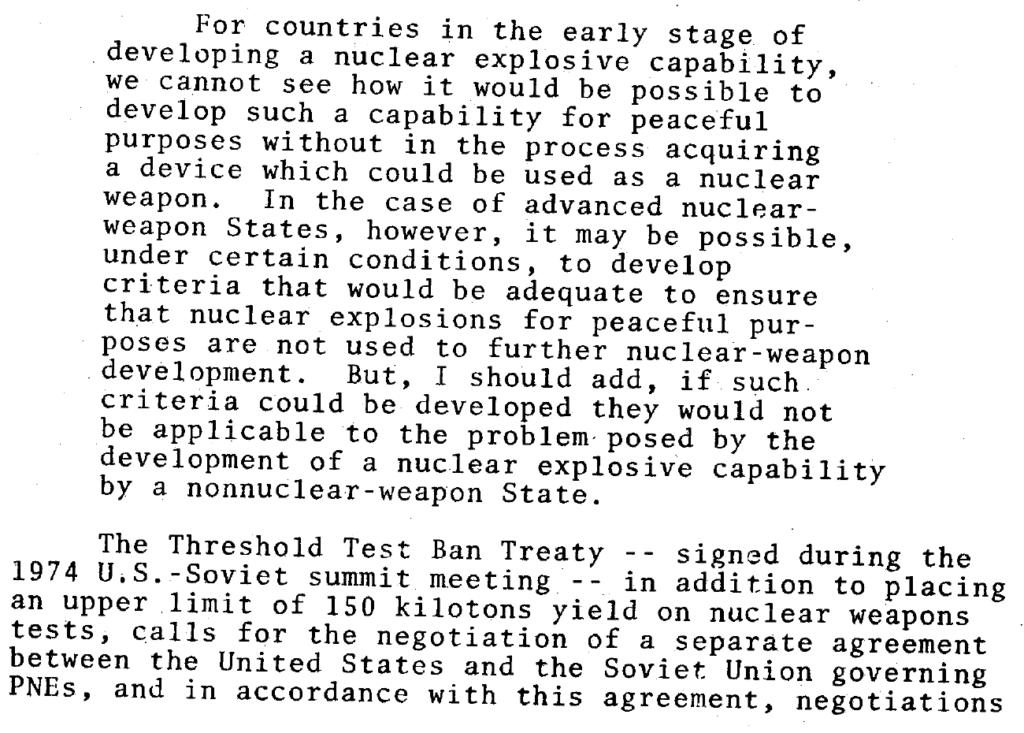

ACDA Structure, 1975 Edition
There’s quite a bit in this report about ACDA’s structure. There’s not room for it here, but I give you this chart:
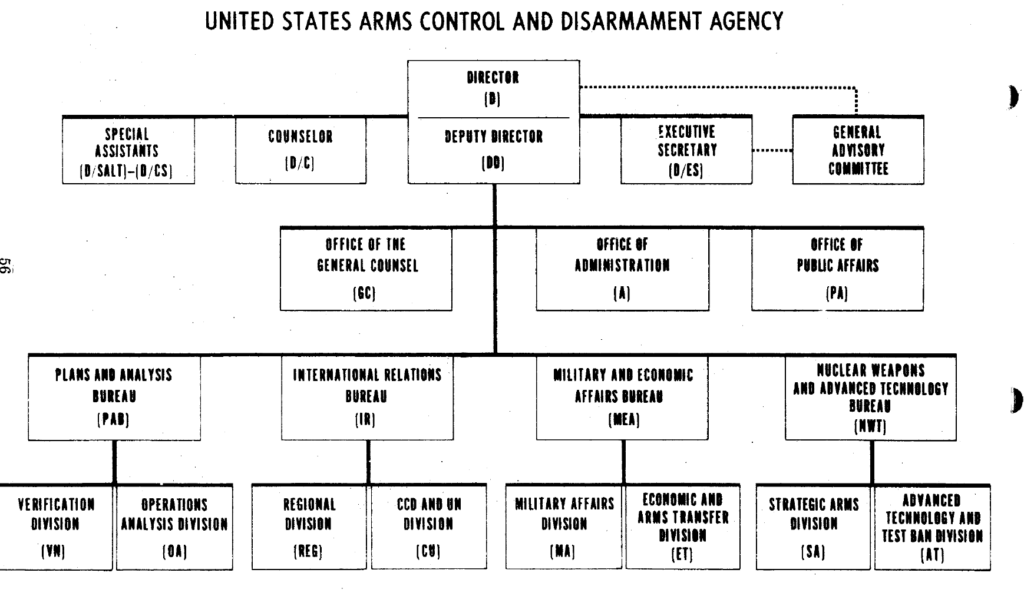
ACDA on IAEA Safeguards, 1975
The 1975 edition of ACDA’s annual report to Congress contains a short section on IAEA safeguards which reminds me that there are few new issues or ideas:

New Model Army – I Love The World
And if one day the final fire explodes across the whitened sky
I know you’ve said you’d rather die and make it over fast
With courage from your bravest friends, waiting outside for the end
With no bitterness but an innocence that I can’t seem to grasp
I know somehow I will survive – this fury just to stay alive
So drunk with sickness, weak with pain, I can walk the hills one last time
Scarred and smiling, dying slow, I’ll scream to no one left at all
I told you so, I told you so, I told you so . .
Oh God I love the world
A really underrated band called Anacrusis covered this song:
